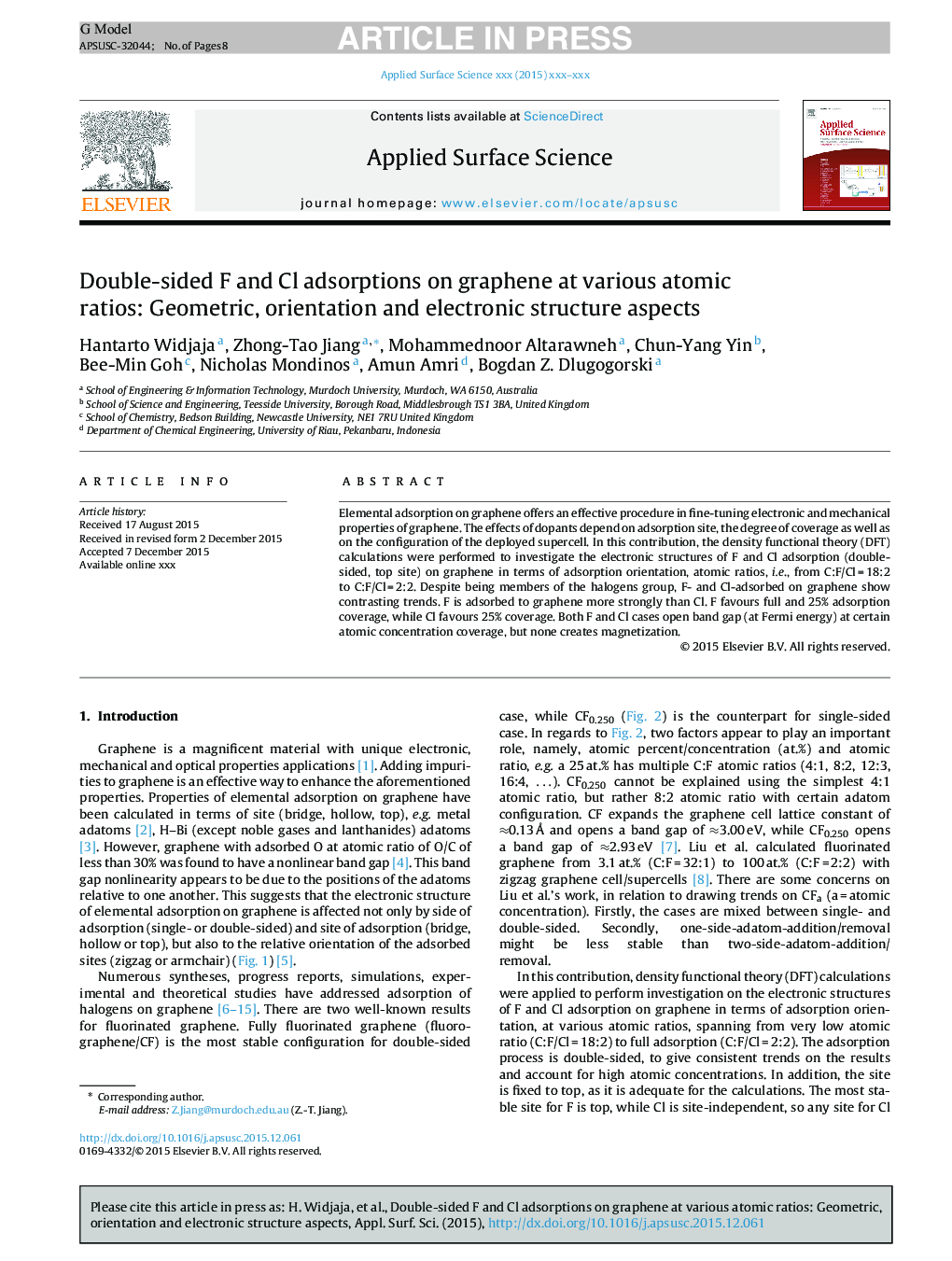| Article ID | Journal | Published Year | Pages | File Type |
|---|---|---|---|---|
| 5352842 | Applied Surface Science | 2016 | 8 Pages |
Abstract
Elemental adsorption on graphene offers an effective procedure in fine-tuning electronic and mechanical properties of graphene. The effects of dopants depend on adsorption site, the degree of coverage as well as on the configuration of the deployed supercell. In this contribution, the density functional theory (DFT) calculations were performed to investigate the electronic structures of F and Cl adsorption (double-sided, top site) on graphene in terms of adsorption orientation, atomic ratios, i.e., from C:F/Cl = 18:2 to C:F/Cl = 2:2. Despite being members of the halogens group, F- and Cl-adsorbed on graphene show contrasting trends. F is adsorbed to graphene more strongly than Cl. F favours full and 25% adsorption coverage, while Cl favours 25% coverage. Both F and Cl cases open band gap (at Fermi energy) at certain atomic concentration coverage, but none creates magnetization.
Related Topics
Physical Sciences and Engineering
Chemistry
Physical and Theoretical Chemistry
Authors
Hantarto Widjaja, Zhong-Tao Jiang, Mohammednoor Altarawneh, Chun-Yang Yin, Bee-Min Goh, Nicholas Mondinos, Amun Amri, Bogdan Z. Dlugogorski,
